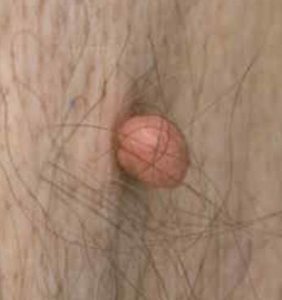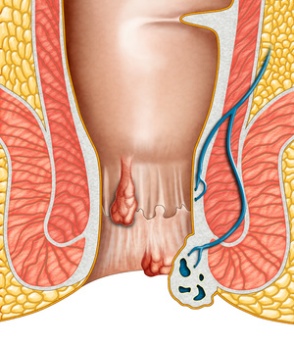
People don’t like to talk about rectal skin tags, but unfortunately, they are a fact of life for some people. If you’re dealing with skin tags in a sensitive area like this, you’re not alone and you don’t need to be embarrassed.
We’ll try to answer the question you may have been afraid to ask. Please feel free to contact us if you have other questions and we’ll do our best to help. Please talk to your doctor if you have questions or concerns about an anal skin tag, as well. While the conversation may feel awkward or uncomfortable to you, your doctor has seen anal skin tags before.
Anal skin tags are sometimes mistaken for hemorrhoids. But are they the same thing? We’ll explain.
Are Rectal Skin Tags the Same Thing as Hemorrhoids?
While anal skin tags and hemorrhoids may seem similar – and let’s face it, it’s hard to get a good look at them due to their location – they are actually two very different things.

A skin tag is simply an extra flap of skin, connected to the body by a narrow stem. Skin tags can appear anywhere on the body, including the genital or rectal area. They are usually less than half an inch in length. You can see some more pictures of skin tags here.
Hemorrhoids are actually varicose veins of the rectum. Just like the varicose veins people sometimes get in their legs, except of course for their location, hemorrhoids are veins that have become swollen and inflamed. They create bulges that can be felt and seen, but they don’t really look like flaps of skin.
Skin tags are usually painless but hemorrhoids often itch and hurt.
Hemorrhoids often bleed, as well. Skin tags may bleed if your clothing rubs against them excessively, but they are less likely to bleed than hemorrhoids. If you happen to spot a bit of bright red blood on your toilet tissue after using the restroom, there is a good chance you have hemorrhoid (always talk to your doctor if you have rectal bleeding or see blood in your stool, though, because rectal bleeding can sometimes be a sign of a serious illness).
Note that there are other types of skin growths that can develop in the anal area, like genital warts. If you’re not sure what you’re dealing with, see your doctor.
The Relationship between Anal Skin Tags and Hemorrhoids
Anal skin tags and hemorrhoids are not the same things. What you should know, though, is that sometimes hemorrhoid shrinks after a while. The vein may become less swollen and distended. A skin tag may be left behind in its place. If you had hemorrhoids in the past, you might have anal skin tags now.
How Do Doctors Treat Rectal Skin Tags?
Doctors treat skin tags in the genital and rectal area the same way they treat them anywhere else on the body. They can cut them off, burn them off (a procedure called electrocautery), or freeze them off with liquid nitrogen (a procedure called cryosurgery). If the thought makes you cringe, you’re not alone.
Skin tags don’t always have to be removed. They are harmless growths so if they aren’t bothering you, you can just leave them alone. However, sometimes clothing rubs against them and irritates them or even makes them bleed. If your skin tags are bothering you or causing discomfort, you may prefer to remove them.
Fortunately, there are alternatives to treatments like electrocautery and cryosurgery. We’ll tell you about our preferred treatment for anal skin tags in a moment but first, we want to let you know that hemorrhoids are treated differently than skin tags, so if you think you might have hemorrhoids instead of skin tags, talk to your doctor about the best treatment option for you.
Our Preferred Treatment for an Anal Skin Tag
Our preferred treatment for rectal skin tags is a natural formula called H-Skin Tags Formula. Made in the United States with homeopathic remedies and natural essential oils, it’s safe to use even on the most sensitive areas and it removes skin tags painlessly. Now, it may not help if you’re actually dealing with hemorrhoids instead of skin tags, so see your doctor if you’re not sure which of the two you’re experiencing. For skin tags, though, this is the most effective topical treatment we’ve found. To learn more about our preferred treatment for anal skin tags, just follow the link.
